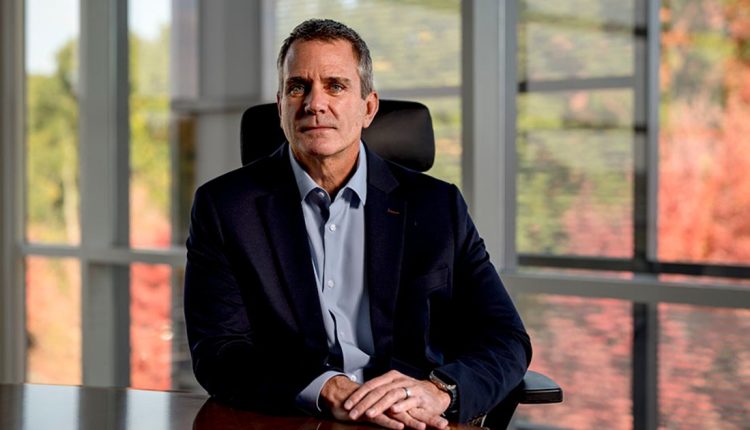For the past two years, Lear Corp. has been stuck between the unpredictable production schedules of automakers and the volatility and demands for pricing relief from its own suppliers.
To call the ongoing supply chain pressures a challenge for the tier one automotive seating supplier would be an understatement, but Lear CEO Ray Scott prefers the term “opportunity.”
In a wide-ranging conversation with Crain’s Detroit Business, an affiliate of Automotive News, at Lear’s global headquarters in the Detroit suburb of Southfield, Mich., the 57-year-old detailed how the COVID-19 pandemic has changed the company’s approach, including the localization of its supply chain and opening new manufacturing plants in North America, including a new e-systems factory pegged for Michigan. The company launched production in mid-September at its new just-in-time seating plant in Detroit on the old Cadillac Stamping site.
Scott also discussed how executives are balancing their time tackling near-term issues, including contract negotiations with customers and policy related to remote vs. in-person work, with long-term considerations such as the electrification of the automotive industry.
“For every one challenge, there could be something in turn that becomes a positive,” Scott said. “So that’s why you just have to keep focused on the things that you can control because there’s a lot of moving parts here.”
A Flint native and Lear “lifer,” Scott started with the company as an intern in 1988 and ascended to the helm in 2018. His leadership style is influenced by his Michigan roots and an appreciation for manufacturing excellence, as well as stints working for Lear in Sweden, Germany and France. He said those experiences helped him better understand what it means to operate a company of $19 billion in revenue per year with more than 250 plants across 38 countries.
“This isn’t Southfield centric. This is the world,” Scott said of his management style. “This is our global 180,000 employees. We have to represent all the voices.”
The following conversation has been condensed and lightly edited for clarity.
- Take me through the rise from intern to CEO.
Yeah, I started in 1988 as an intern, and it was at the lowest level, bills and material, and really worked my way up through the organization, and the company was a relatively young company at that time. … The growth trajectory was accelerating, and so opportunities were presenting themselves, and like I always talk about, some of the biggest challenges become your biggest opportunities.
Some of those challenges meant even moving over to Sweden. There was a business that we had in Sweden that wasn’t doing that well, and my family picked up and we moved. I was fortunate enough to really turn that business around, and then I moved to Germany and took on an expanded role.
At the time, it just seemed like, what did I do? What am I doing here? Did I mess up? You know, it didn’t seem like the things that I was learning at the time would help me develop into the person I am today, because you really don’t recognize those things. And so, I look back at those times and realize I learned so much in Sweden around the development of people and appreciating diversity of culture, diversity of individuals, and really, how to retain and attract talent.
Without those opportunities earlier on in my career, it would have been very challenging to really appreciate what we’re being faced with and making very direct decisions moving forward.
- What would you identify as the biggest challenge for you right now?
It’s been amazing over the last two years as the industry has been challenged with all kinds of things — chip shortage, labor crisis, transportation, inflationary costs … As we look forward, a potential recession or worse. When we went through the COVID situation, I tried to make it very simple: Let’s focus on people. Let’s focus on the things that we can control, the balance sheet, the liquidity, what we’re doing internally at the company, and let’s keep a very close eye on strategy. Where’s the world going?
As I look forward, I think that still remains the focus, and the challenges are not getting distracted (by) things that you can’t really control and looking within your own four walls and saying, here’s the things that we have to focus on, and giving the team clear direction and keeping it very simple.
- On my way up to your office, I was surprised by the level of activity on the campus. Are employees back in the office now? What’s the policy on that?
So we’ve been back in a three day (in), two day remote situation since June 15, 2020 (except for during the omicron variant outbreak). One thing that I talked about was remaining very flexible and remaining focused on the voice of our employees, and that ranges, I mean, really picking up where everybody was at… I said, what I need the team to do from an employee standpoint is focus on what is equitable for all because we had people that are full time back in the plants … We had offices open in China or India or other parts of the world, and we had different structures within Munich or UK and then we had Southfield. And I said, whatever we do, I want this to be a global approach to how we’re going to treat all employees.


